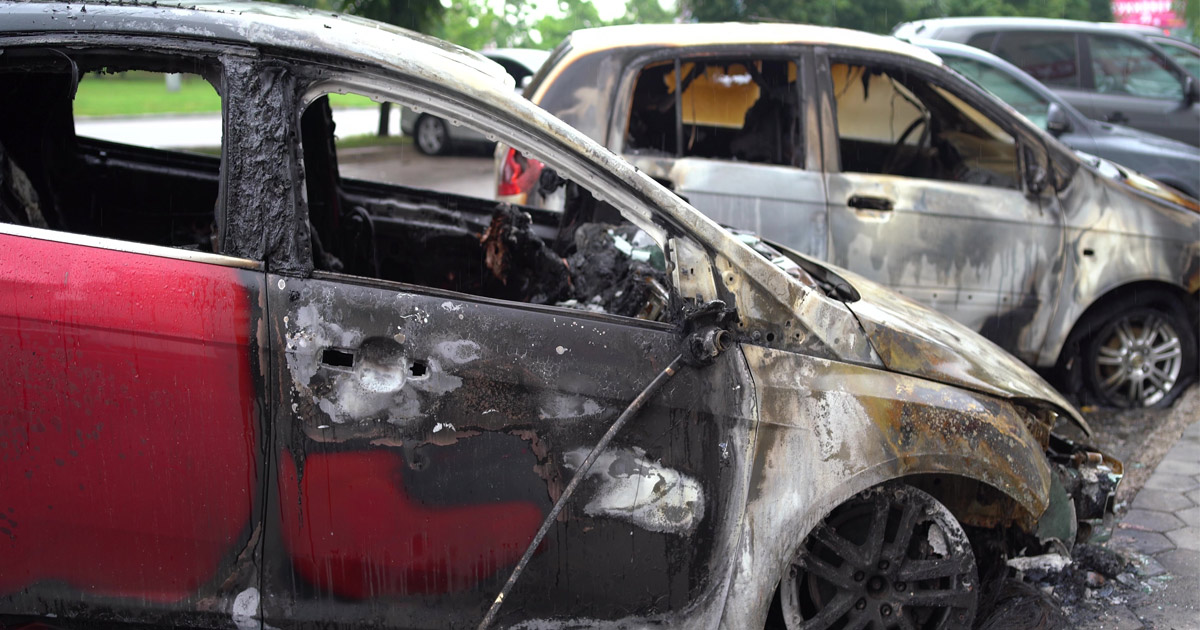Car accidents can result in a range of injuries, and burns are among the most devastating. The heat, flames, or chemicals involved in a car crash can cause severe burns, leading to long-term physical and emotional consequences and possible financial ruin.
Burns resulting from car accidents can be classified into several categories, including:
- Thermal burns: These are the most common types of burns in car accidents and occur when the skin comes into contact with flames, hot surfaces, or steam. The severity of thermal burns depends on temperature, duration of exposure, and the area of the body affected. Symptoms may include redness, blistering, and severe pain.
- Chemical burns: Exposure to hazardous substances can cause chemical burns in some car accidents. These occur when the skin or eyes come into contact with corrosive substances like acids, alkalis, or solvents. Chemical burn symptoms include redness, irritation, blistering, and tissue damage.
- Electrical burns: Car accidents involving live wires or components can cause electrical burns. It can happen when an electric current passes through the body, causing tissue damage. Electrical burns can be deceiving, as they may not always cause visible injuries on the skin’s surface. However, severe internal damage can affect muscles, nerves, and organs.
- Friction burns: Friction burns, also known as road rash, occur when the skin rubs against abrasive surfaces during a car accident, like pavement or gravel. Depending on the speed and force of the impact, these burns can range from mild abrasions to deep wounds. Symptoms may include pain, redness, swelling, and skin loss.
How Are Burns Diagnosed After a Car Accident?
Diagnosing burns from car accidents is a meticulous process that involves a comprehensive medical evaluation and diagnostic procedures. Initially, a healthcare professional conducts a physical examination to assess the extent and severity of the burns. This includes scrutinizing the affected areas for signs such as redness, blistering, swelling, and tissue damage, ensuring no detail is overlooked.
Burns are then classified based on depth and severity, ranging from superficial first-degree burns to full-thickness third-degree burns. This classification aids in determining treatment and prognosis.
In severe cases, additional diagnostic measures may be necessary. X-rays or CT scans may be performed to assess the extent of tissue damage and identify any underlying injuries, such as fractures or internal organ damage. Blood tests may also diagnose infection, dehydration, or electrolyte imbalances.
What Are the Complications Associated With Burns From Car Accidents?
Burns resulting from car accidents can give rise to serious complications that necessitate prompt medical attention. Infections are common, as burn injuries compromise the skin’s natural barrier, rendering it more susceptible to bacterial or fungal infections.
Timely treatment with antibiotics or antifungal medications may be required to prevent or address burn infections. Severe burns can also lead to significant scarring and disfigurement, necessitating surgical intervention or cosmetic procedures to improve appearance and function.
Burns can cause damage to nerves, resulting in numbness, tingling, or loss of sensation in the affected area. Nerve damage can also impact mobility and coordination, necessitating physical therapy or rehabilitation to facilitate recovery. There might even be psychological effects, including anxiety, depression, post-traumatic stress disorder (PTSD), and body image issues. Counseling or therapy can address these emotional challenges and promote psychological well-being.
Our Virginia Beach Car Accident Lawyers at Anchor Legal Group, PLLC Offer Legal Guidance and Support for Burn Injury Cases
If you have suffered burns in a car accident, our experienced Virginia Beach car accident lawyers at Anchor Legal Group, PLLC are ready to assist. Contact us online or call us at 757-LAW-0000 to schedule a free consultation. Located in Virginia Beach, we serve clients in Chesapeake, Norfolk, Suffolk, Portsmouth, Newport News, Hampton, Williamsburg, and Eastern Shore, Virginia.


